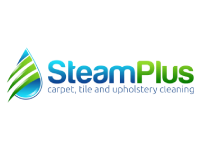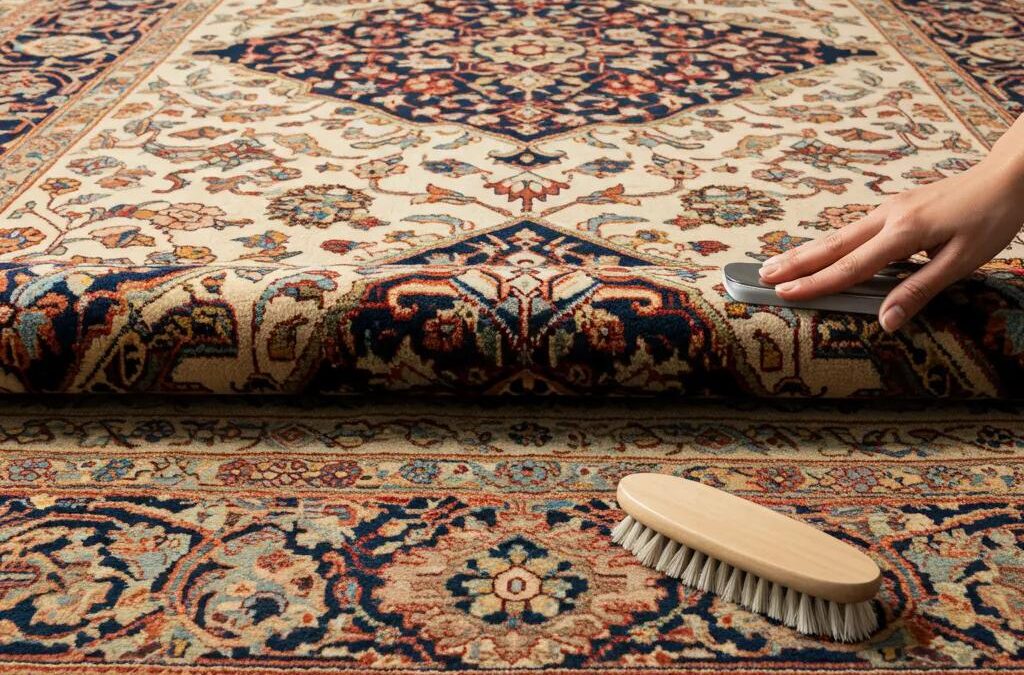Oriental rugs are cherished heirlooms, their intricate weaves and natural dyes demanding expert attention to maintain their splendor and worth. Improper cleaning can lead to color bleeding, distorted fibers, and permanent shrinkage, diminishing both their appearance and your investment. By entrusting your oriental rug to a specialist like , you gain access to meticulous inspection, material-specific techniques, and preservation-focused solutions. This guide explores why specialist expertise is crucial, highlights the most effective cleaning methods, details the professional process, identifies specific rug type needs, addresses common issues, showcases Steam Plus Carpet Cleaning and Water Restoration’s qualifications, and outlines clear pricing factors for professional oriental rug cleaning.
Why Should You Choose an Oriental Rug Specialist for Cleaning?
Specialists blend textile science with skilled craftsmanship to protect delicate fibers, stabilize natural dyes, and preserve intricate knot structures. Their customized protocols prevent shrinkage, color loss, and long-term wear.
What Makes Oriental Rugs Unique and Delicate?
Oriental rugs are handcrafted textiles woven from wool, silk, or cotton, with warp and weft threads creating dense piles and elaborate designs. Natural dyes provide vibrant colors but are sensitive to alkaline solutions, which can cause bleeding. The high knot density requires controlled agitation to prevent fiber felting. Understanding these characteristics ensures safe handling and optimal cleaning results.
The Practical Compendium of Oriental Rugs: Selection, Acquisition, Maintenance, and Restoration Oriental rugs have become an essential element in our lives… comprehensive information on each type of rug available in the market… for the selection, acquisition, maintenance, and restoration of rugs, as well as for…The practical book of oriental rugs, 2017
What Are the Risks of Improper Oriental Rug Cleaning?
Using standard steam or brush methods on an oriental rug can lead to pile distortion, dye migration, matted fringes, and unraveling edges. Excessive moisture can cause mildew, while harsh chemicals strip natural waxes and weaken fibers. These outcomes shorten the rug’s lifespan and reduce its value, underscoring the necessity of expert care.
Traditional and Alternative Methodologies for Oriental Rug Cleaning and Restoration Methodologies employed for the cleaning and restoration of rugs, along with their alternative approaches. Conventional domestic and commercial cleaning techniques typically necessitate the complete submersion of a rug in a…Traditional Methods and Alternatives for Cleaning, Repairing, and Exhibiting Rugs., Unknown Author, 1990
How Does Specialist Expertise Preserve Rug Value and Longevity?

Oriental rug specialists begin with tests for fiber and dye stability, selecting pH-balanced formulas that remove soil without affecting colorfastness. Controlled water temperature and gentle hand-washing preserve pile integrity, while precise drying prevents shrinkage. This specialized knowledge protects both the aesthetic and structural qualities, extending the rug’s life by decades.
What Are the Best Oriental Rug Cleaning Methods?
The best cleaning methods for oriental rugs depend on their fiber type, weave density, and dye stability. Matching the correct technique to the rug’s characteristics ensures thorough soil removal while minimizing risks.
| Technique | Mechanism | Advantage |
|---|---|---|
| Full Immersion Washing | Submerging in pH-balanced wash baths with gentle agitation | Deep-seated dirt removal and dye preservation |
| Dry Cleaning | Applying absorbent compounds or low-moisture solvents | Safe for fragile silk and unstable dyes |
| Low-Moisture Cleaning | Encapsulation of soil in polymer crystals with minimal moisture | Rapid turnaround and minimal fiber swelling |
| Spot Cleaning & Stain Removal | Targeted application of enzyme or solvent treatments | Precision removal of specific stains |
Each of these techniques addresses distinct cleaning challenges, guiding specialists to the ideal process for every oriental rug.
How Does Full Immersion Washing Work for Oriental Rugs?
Full immersion washing starts with a dust removal phase, followed by soaking in temperature-controlled tanks with a wool-safe detergent. Gentle manual agitation loosens embedded dirt without damaging the pile. Multiple rinse cycles remove residual soil and detergent. Controlled extraction and flat drying ensure even moisture release, maintaining pile uniformity.
When Is Dry Cleaning Recommended for Delicate Rugs?
Dry cleaning uses absorbent cleaning powders or non-aqueous solvents applied directly to the rug. This method avoids water, making it perfect for antique silk rugs, those with unstable natural dyes, or rugs with water-sensitive backing. After a brief waiting period, specialists gently brush away the compounds, revealing restored color and texture.
What Are the Benefits of Low-Moisture Cleaning for Oriental Rugs?
Low-moisture cleaning traps soil using special polymers that crystallize around dirt particles. Technicians then vacuum away the encapsulated debris. This method uses less than 20 percent moisture, significantly reducing drying times and preventing shrinkage. It’s ideal for high-traffic areas where a quick turnaround is essential.
How Is Spot Cleaning and Stain Removal Performed on Oriental Rugs?
Targeted spot treatment begins with a dye-fastness test in an inconspicuous area. Technicians apply enzyme-based cleaners for organic stains or solvent blends for oil-based marks. They work from the outside of the stain inward to prevent spreading, then neutralize and rinse. Careful blotting and controlled drying prevent residual rings and fiber distortion.
How Does the Professional Oriental Rug Cleaning Process Work?
A comprehensive professional process ensures thorough care, from initial inspection to final finishing, addressing every aspect of the rug’s condition.
What Happens During the Initial Inspection and Pre-Cleaning?
Technicians document the rug’s origin, pile height, fiber type, weave density, presence of natural dyes, and any existing damage. They note pet stains, moth damage, fringe wear, and soil buildup. This assessment determines the most effective cleaning method and any necessary restoration steps.
- Fiber identification (wool, silk, cotton)
- Dye stability testing
- Soil and stain mapping
- Damage and wear assessment
An accurate diagnosis forms the basis for a customized cleaning strategy.
How Is Dusting and Dirt Removal Performed Safely?
Specialists use specialized dusting machines that vibrate the rug over cushioned surfaces, dislodging dry soil without beating or abrasion. Hand-held vacuums with adjustable suction settings remove remaining grit from the pile and fringe, preventing abrasive particles from damaging fibers during washing.
What Are the Steps in Gentle Washing Techniques?
Gentle washing involves hand brushing with soft-bristle tools in shallow wash troughs. Technicians circulate water at around 80°F with wool-safe solutions, monitoring pH levels to keep them between 6.5 and 7.5. This controlled environment prevents over-saturation and fiber matting.
How Are Rinsing and Water Extraction Managed?
After washing, multiple clear-water rinse cycles thoroughly remove all soil and detergent. High-power extraction vacuums remove 85–90 percent of the moisture while supporting the fringe to prevent tangling. Maintaining uniform tension across the rug preserves its shape and pile consistency.
What Does Drying and Finishing Involve for Oriental Rugs?
Technicians use climate-controlled drying rooms with gentle airflow directed beneath suspended rugs. Fringe ends are separated and combed to keep them aligned. Final grooming restores the pile direction and enhances its luster.
Which Types of Oriental Rugs Require Specialized Cleaning?
Different rug origins and materials require customized approaches to respect each rug’s heritage and textile properties.
| Rug Origin | Material Composition | Cleaning Consideration |
|---|---|---|
| Persian (Tabriz) | High-density wool with natural dyes | Full immersion with dye-stability testing |
| Turkish (Hereke) | Fine wool, silk highlights | Dry cleaning to protect silk fibers |
| Indian, Chinese | Vegetable-dyed wool, cotton foundation | Low-moisture cleaning to prevent dye bleed |
| Antique & Vintage | Fragile wool or silk with hand-woven fringe | Solvent-based stain removal and gentle restoration |
Tailoring cleaning methods to these specific attributes ensures each rug’s unique structure and coloration remain intact.
What Are the Cleaning Considerations for Persian Rugs?
Persian rugs often feature dense wool piles and traditional vegetable dyes. Specialists use immersion washing with buffered detergents to lift soil while preserving color vibrancy. Temperature control and neutralization steps prevent wool shrinkage.
How Are Turkish and Anatolian Rugs Cleaned Differently?
Turkish rugs often include silk highlights and a looser weave. Low-moisture or dry cleaning methods avoid water-related stress on delicate fibers, ensuring the silk’s sheen remains vibrant and the fringe stays intact.
What Special Care Do Indian and Chinese Oriental Rugs Need?
Indian and Chinese rugs frequently use plant-based dyes on softer wool or cotton foundations. Enzyme-free, low-pH solutions combined with quick-dry techniques prevent dye bleeding and structural shrinking.
How Are Antique and Vintage Oriental Rugs Restored and Cleaned?
Antique rugs may have worn fringes, moth damage, and weakened fibers. Specialists use solvent-based stain treatments, controlled temperature or oxygen depletion for moth eradication, and custom weaving to replace missing knots before gentle cleaning.
How Are Common Oriental Rug Problems Addressed by Specialists?

Specialists resolve persistent issues that standard cleaning methods often miss, restoring both the rug’s function and its beauty.
How Is Pet Odor and Urine Effectively Removed from Oriental Rugs?
Enzyme formulations break down uric salts, while specialized extraction vacuums flush out residue. Technicians neutralize odor molecules and apply oxygen-based treatments to disinfect without fading dyes, ensuring the rug’s natural vibrancy is restored.
What Are the Best Methods for Stubborn Stain Removal on Oriental Rugs?
Stubborn stains—like wine, coffee, or ink—require a multi-step approach. Technicians pre-treat with pH-balanced solvents, blot in successive layers, then rinse and reassess. This method preserves dye stability and prevents unsightly halos.
How Is Moth Damage Treated and Prevented in Oriental Rugs?
Larvae-targeted treatments involve controlled temperature exposure or oxygen depletion chambers to eliminate insects. Specialists apply repellents and recommend regular dusting and sunlight exposure to minimize future infestations.
What Does Fringe Repair and Restoration Involve?
Fringe damage is repaired through custom weaving techniques that re-knot warp ends and integrate matching wool or silk threads. Specialists then secure the new fringe with gentle finishing to blend seamlessly with the existing structure.
What Sets Steam Plus Carpet Cleaning and Water Restoration Apart as Your Oriental Rug Specialist?
Steam Plus Carpet Cleaning and Water Restoration combines industry certifications, eco-friendly cleaning agents, and a customer-focused approach to provide unparalleled care for your oriental rugs.
What Certifications and Experience Do Our Technicians Have?
All our technicians hold IICRC and Wool Safe certifications, demonstrating their expertise in textile science, pH-balanced cleaning, and fiber preservation. Their continuous training ensures they stay current with the latest preservation techniques.
How Do We Use Eco-Friendly and Safe Cleaning Solutions?
Our plant-derived, biodegradable detergents effectively remove contaminants while protecting your family’s health and your pets. Hypoallergenic formulas maintain fiber integrity and natural dye vibrancy without harsh chemicals.
What Do Customers Say About Our Oriental Rug Cleaning Services?
- Clients praise our meticulous inspection process that identifies hidden wear
- Homeowners commend our gentle washing techniques that revive patterns
- Collectors appreciate our careful restoration that preserves antique value
Positive feedback highlights the trust placed in our specialized processes and our commitment to long-term rug preservation.
How Much Does Professional Oriental Rug Cleaning Cost and What Factors Affect Pricing?
Our transparent pricing reflects the complexity of the materials, the rug’s condition, and the specific processes required.
What Are the Main Cost Factors for Oriental Rug Cleaning?
- Rug size and total square footage
- Fiber composition (wool, silk, cotton)
- Level and type of soiling, stains, or odors
- Extent of necessary restoration (fringe repair, color correction)
How Can You Get a Free Estimate or Pricing Information?
Potential clients can request a complimentary on-site inspection or submit detailed photos for an initial assessment. This ensures accurate recommendations and competitive pricing before you commit.
Oriental rugs are cultural treasures that flourish with expert care. By choosing Steam Plus Carpet Cleaning and Water Restoration, you benefit from precise inspection, customized cleaning methods, and proven restoration expertise that safeguard your rug’s value and extend its lifespan. Contact us today to schedule a consultation and experience professional oriental rug cleaning tailored specifically for your cherished heirlooms.








